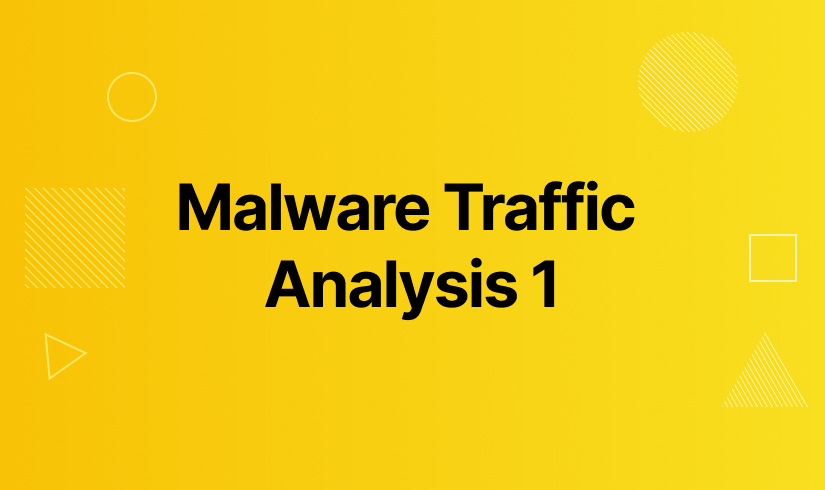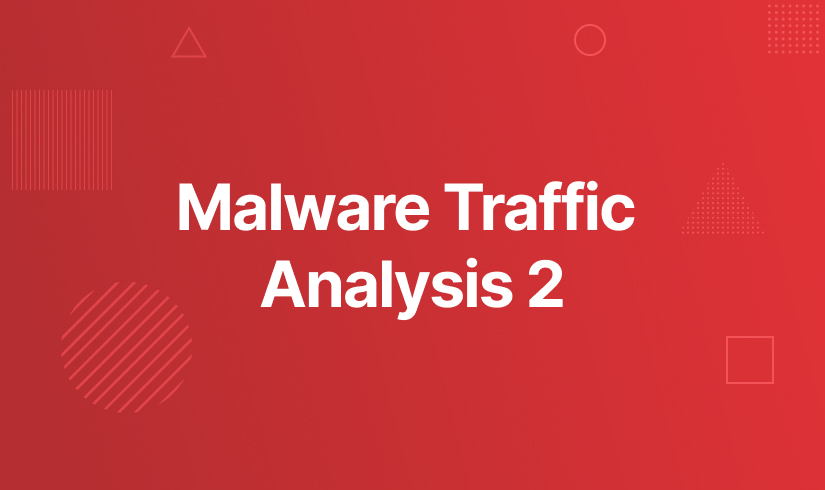8 min to read
Malware Traffic Analysis 1
CTF challenge [write-up]

Challenge Requirements:
- Wireshark
- Network Miner
- BrimSecurity & Suricata (Just follow the video instructions on the details page)
- VirusTotal Website
Follow the challenge details & instructions from here before the start.
You can find the challenge questions here
given a .zip file: c04-MalwareTrafficAnalysis1.zip which contains a pcap file (The password for zip file is: cyberdefenders.org)
Lets analyse the file and answer the questions…
Q1. What is the IP address of the Windows VM that gets infected?
We have many ways to get the IP address depending on the tool we use, but NetworkMiner is faster:
Open the pcap file in NetworkMiner, under Hosts tab you will see only 1 windows host with IP 172.16.165.165 and that is the answer.

If you want to get it with Brim, Just drop the pcap file into Brim, wait to load the data, go to Queries in the left panel and select Suricata Alerts by Source and Destination you will see the exploit kit & trojan alerts about the same IP that we found in the previous step which is 172.16.165.165:

You can get back to the data and use filter event_type="alert" to show all alerts that gives the same result about Exploit_KIT delivering an archive to the client with destination IP (172.16.165.165):

Q2. What is the hostname of the Windows VM that gets infected?
In NetworkMiner, double-click on the windows host and you will see the hostname:

You can also get it from Wireshark by filtering the traffic with nbns or dhcp and look for Host-Name in the dhcp-request or dhcp-inform packet details:

If you are using Brim, just use dhcp filter and you will see the hostname directly which is K34EN6W3N-PC:

Q3. What is the MAC address of the infected VM?
Do the same steps as above in NetworkMiner,Wireshark or Brim to get the MAC address of the host:

We already got it in the previous question.
Q4. What is the IP address of the compromised web site?
In Wireshark, Go to Statistics > HTTP > Requests you will notice that we have 6 websites:
- www.youtube.com
- www.ciniholland.nl
- www.bing.com
- stand.trustandprobaterealty.com
- adultbiz.in
- 24corp-shop.com
www.ciniholland.nl has the most number of requests which is 20 while stand.trustandprobaterealty.com is the 2nd one with only 12 requests:

Also go to Statistics > HTTP > Request Sequences you will see that the user opened bing.com first and make a search for ciniholland and then visited www.ciniholland.nl which redirects the user to all other next pages & websites include the website that conatains the exploit-kit.

If you filterd the data to show all http traffic related to the infected host with http && ip.addr == 172.16.165.165 filter, you will see the IP address for www.ciniholland.nl website which is 82.150.140.30 and this is the right answer.

Q5. What is the FQDN of the compromised website?
FQDN stands for Fully Qualified Domain Name, the FQDN for www.ciniholland.nl is ciniholland.nl.
Q6. What is the IP address of the server that delivered the exploit kit and malware?
According to the 3rd screenshot in Question1, the IP that delivered Exploit-kit to the infected host is 37.200.69.143 as we can see:

Q7. What is the FQDN that delivered the exploit kit and malware?
As we know the IP address from previous question, we can use it to get the FQDN from the hostname by Wireshark, NetworkMiner or Brim.
If you are using NetworkMiner, just write the IP 37.200.69.143 in Filter and you will get the host name which is stand.trustandprobaterealty.com:

By Wireshark, add http && ip.addr == 37.200.69.143 filter to get the hostname:

Another way using Brim, use _path="http" and 37.200.69.143 filter and you will get it:

Q8. What is the redirect URL that points to the exploit kit (EK) landing page?
We already know the IP for the website that delivered the Exploit Kit from Question 6, So we can check its http request to get the Referrer header which is the redirect URL..
To do that with Brim, just use the following filter 37.200.69.143 _path="http" | sort ts to show only logs releated to that IP and sort them with time, then check the referrer column for the first request as the following shot:

For Wireshark users, use http && ip.addr == 37.200.69.143 filter, click on Time column to sort it, then check the referrer of the first request as the following:

Note: If you want to make a new column that display the refferer next to host columns without going to packet details, just follow the next steps..
Go to Edit > Preferences > Columns, click on + mark to make a new column, type its Title (any thing such as Referrer), in Type select Custom, in Fields type http.referer, drag the column and drop it at the place you want (maybe under Host) and then click OK:

You can see the new column as the following image:

Q9. Other than CVE-2013-2551 IE exploit, another application was targeted by the EK and starts with “J”. Provide the full application name.
By checking alerts in Brim with event_type="alert" dest_ip=172.16.165.165 filter, we can notice that all alert.signatures are about JAR/Java files:

As we know the answer starts with “J” according to the question, then the Exploit Kit maybe targeting Java, which is the correct answer.
Another way to make sure of that: export http objects (files) related to the IP that delivered the malware (37.200.69.143) using Wireshark or NetworkMiner, scan them on VirusTotal which results that:
- .swf file has a vulnerability targeting Adobe Flash Player
- .jar file has a vulnerability targeting Java Runtime Environment
So, The answer will be Java.
Q10. How many times was the payload delivered?
In Wireshark, by using this filter http && ip.addr == 37.200.69.143 and sorting the result by Time column as we see in the following image:

We can notice that, There are 2 flash files, 2 java archives, 2 xml files & 3 application/x-msdownload files
We can check the exported http objects also, it gives the same result:

By exporting these files and scanning them on VirusTotal we will see only the html, swf & java files are malicious..
I noticed that:
- swf file has a cve
cve-2014-0569which is a security vulnerability in Adobe Flash Player.. After searching, I found that .swf file is used as the exploit file for it. - jar file has a cve
cve-2012-0507which is a critical security vulnerability that existed in Java Runtime Environment (JRE) software.. I found that .jar file is a part of the exploiation for this vulnerability also.

However, The payload will be application/x-msdownload file that deliverd 3 times in 3 requests as 3 files with same size, and this is the answer.
Another way to solve it, just follow the requests and alerts in Brim using some filters such as event_type="alert" src_ip=37.200.69.143 dest_ip=172.16.165.165 | sort ts you will notice a 3 alerts for The Exploit-Kit: ET EXPLOIT_KIT GoonEK encrypted binary (3):

Q11. The compromised website has a malicious script with a URL. What is this URL?
From Question 4 and 5, the compromised website is ciniholland.nl with IP 82.150.140.30 ..
We can filter the traffic in Wireshark by http , go to the first frame belongs to ciniholland.nl and follow tcp or http stream:

By looking for a malicious script with a URL, I found a (hidden) script that redirects the victim to http://24corp-shop.com website which is the answer:

Q12. Extract the two exploit files. What are the MD5 file hashes? (comma-separated)
According to Question10, I said We have many files but only jar and swf are used as exploit files in their vulnerabilities.. So Let’s check their MD5 hashes on VirusTotal:
- jar:
1e34fdebbf655cebea78b45e43520ddf - swf:
7b3baa7d6bb3720f369219789e38d6ab
The answer format tells us the first part starts with 7 and second one starts with 1, So the final answer will be: 7b3baa7d6bb3720f369219789e38d6ab,1e34fdebbf655cebea78b45e43520ddf
Finally, In this challenge I’v tried to show you how you can use other tools to solve the challenge because in the next challenges Wireshark will not be enough.



